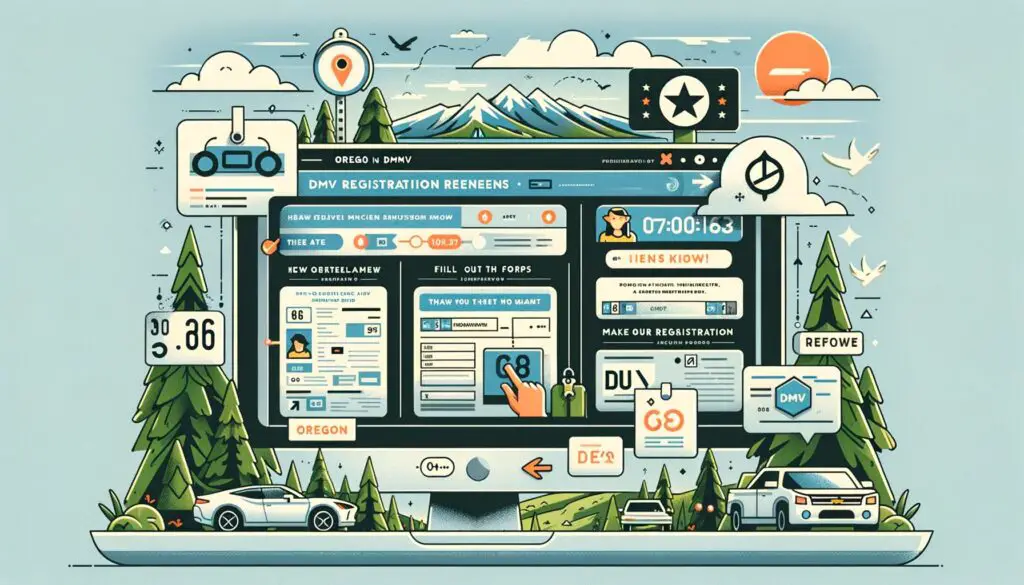Learning to drive is a pivotal skill in today’s world, offering freedom and independence. Driving schools play a crucial role in imparting the necessary knowledge and skills to become a safe and responsible driver. In this guide, we delve deep into the world of driving schools, covering everything from their definition and benefits to choosing the right one for your needs.
What is Driving School?
Driving schools are educational institutions dedicated to providing structured training programs for individuals aspiring to obtain a driver’s license. These programs offer a comprehensive blend of theoretical knowledge and practical skills necessary for safe and responsible driving.
Definition and Purpose
Driving schools serve the primary purpose of equipping learners with the knowledge, skills, and confidence needed to navigate roads safely. They aim to instill good driving habits, promote adherence to traffic laws, and cultivate a sense of responsibility among aspiring drivers.
Overview of Services Offered
Driving schools offer a diverse range of services tailored to meet the varying needs of learners:
- Classroom Instruction:
- Traffic laws and regulations: Classroom sessions cover essential traffic laws, rules, and regulations governing road behavior.
- Road signs and signals: Instruction includes the meanings and interpretations of various road signs and signals to enhance awareness on the road.
- Safe driving practices: Students learn defensive driving techniques, hazard awareness, and accident prevention strategies.
- In-Car Training:
- Practical driving skills: Certified instructors provide hands-on training to develop crucial driving skills such as steering control, braking techniques, and maneuvering in different traffic conditions.
- Real-world scenarios: In-car sessions simulate real-world driving situations, allowing students to apply theoretical knowledge in practical settings and gain valuable experience.
- Preparation for Driving Tests:
- Written exams: Driving schools offer preparatory classes to help students pass written tests assessing their understanding of traffic laws and safe driving practices.
- Practical assessments: Students receive guidance and practice sessions to prepare for practical driving tests, including maneuverability tests and road driving assessments.
Benefits of Attending Driving School
Attending driving school offers numerous advantages, contributing to the overall competence and confidence of aspiring drivers:
- Comprehensive Driving Knowledge:
- Understanding Traffic Laws: Driving schools provide in-depth knowledge of traffic laws, regulations, and road signs, ensuring learners are well-informed and compliant with legal requirements.
- Mastery of Defensive Driving Techniques: Students learn defensive driving skills to anticipate and react to potential hazards, enhancing safety on the road.
- Hazard Awareness: Training includes developing awareness of common road hazards and strategies to mitigate risks, fostering a proactive approach to driving.
- Development of Practical Driving Skills:
- Hands-on Training: In-car sessions offer practical experience under the guidance of experienced instructors, allowing learners to hone essential driving skills.
- Mastery of Vehicle Control: Students practice steering, braking, accelerating, and maneuvering in various traffic scenarios, building confidence and proficiency behind the wheel.
- Preparation for Driving Tests:
- Confidence Building: Driving schools provide structured preparation for written and practical driving tests, boosting students’ confidence and readiness to successfully obtain a driver’s license.
- Increased Success Rate: Rigorous training and guidance increase the likelihood of passing driving tests on the first attempt, saving time and resources for learners.
Types of Driving Schools
Driving schools cater to a diverse range of needs and preferences, offering specialized training programs to meet the unique requirements of learners. Here are the common types of driving schools:
Public Driving Schools
Overview:
Public driving schools, typically operated by government agencies or educational institutions, offer standardized driver training programs to the general public.
Key Features:
- Standardized Curriculum: Public driving schools follow a standardized curriculum mandated by regulatory authorities, ensuring consistency in instruction and content.
- Affordability: These schools often offer cost-effective training options, making driver education accessible to a wide range of learners.
- Government Oversight: Public driving schools are subject to government regulations and oversight, ensuring compliance with safety standards and educational requirements.
Private Driving Schools
Overview:
Private driving schools are independent businesses that provide tailored driving lessons and personalized instruction to learners.
Key Features:
- Customized Instruction: Private driving schools offer personalized instruction tailored to the individual needs and preferences of learners.
- Flexible Scheduling: These schools often provide flexible scheduling options, allowing students to arrange lessons at convenient times.
- Specialized Training: Private driving schools may offer specialized training programs focusing on specific areas such as defensive driving, advanced techniques, or specialized vehicles.
Online Driving Schools
Overview:
Online driving schools offer convenient and flexible learning options, allowing students to complete coursework remotely at their own pace.
Key Features:
- Convenience: Online driving schools provide the flexibility to study from any location with internet access, eliminating the need for commuting to physical locations.
- Self-Paced Learning: Students have the freedom to progress through coursework at their own pace, accommodating busy schedules and individual learning styles.
- Interactive Resources: These schools often utilize multimedia resources, interactive simulations, and practice tests to enhance learning and engagement.
Specialty Driving Schools
Overview:
Specialty driving schools focus on specific areas of driving education, offering specialized training programs tailored to unique learning objectives.
Key Features:
- Focused Curriculum: Specialty driving schools concentrate on specific areas such as defensive driving, commercial driving, or advanced techniques, providing in-depth instruction in specialized areas.
- Expert Instructors: These schools employ instructors with expertise and experience in the particular domain of focus, ensuring high-quality instruction and guidance.
- Targeted Training: Specialty driving schools cater to individuals seeking specialized skills or certifications, such as professional drivers, emergency vehicle operators, or performance driving enthusiasts.
Choosing the Right Driving School
Selecting the right driving school is crucial for a positive learning experience and successful outcomes. Consider the following factors when making your decision:
Location
Considerations:
- Convenience: Choose a driving school that is conveniently located, minimizing travel time and logistical challenges.
- Accessibility: Ensure the driving school is easily accessible from your home, workplace, or other frequently visited locations.
Cost
Considerations:
- Tuition Fees: Compare the tuition fees of different driving schools to find one that fits your budget.
- Payment Options: Inquire about payment plans or financing options offered by the driving school to make education more affordable.
Curriculum
Considerations:
- Comprehensive Coverage: Evaluate the curriculum offered by each driving school to ensure it covers all necessary topics, including traffic laws, defensive driving techniques, and practical skills.
- Alignment with Learning Objectives: Choose a driving school whose curriculum aligns with your learning objectives and preferences, whether you seek a thorough understanding of driving principles or focused preparation for driving tests.
Instructor Credentials
Considerations:
- Qualifications: Check the qualifications and certifications of driving instructors to ensure they are licensed and experienced professionals.
- Teaching Style: Inquire about the teaching approach and instructional methods used by instructors to determine compatibility with your learning style and preferences.
Reviews and Testimonials
Considerations:
- Quality of Instruction: Read reviews and testimonials from former students to gauge the quality of instruction and overall satisfaction with the driving school.
- Success Stories: Look for testimonials highlighting successful outcomes, such as passing driving tests on the first attempt or gaining confidence behind the wheel.
Understanding the Curriculum
A comprehensive driving school curriculum typically encompasses both classroom learning and in-car training, offering a balanced approach to driver education.
Classroom Learning
In the classroom, students delve into essential theoretical knowledge and foundational concepts to develop a solid understanding of driving principles. Key topics covered include:
- Traffic Laws and Regulations: Students learn about traffic laws, rules, and regulations governing road behavior, including speed limits, right-of-way, and traffic signals.
- Road Signs and Signals: Instruction includes the meanings and interpretations of various road signs and signals, enabling students to navigate roads safely and effectively.
- Defensive Driving Techniques: Classroom sessions focus on defensive driving strategies, emphasizing proactive approaches to hazard recognition, risk mitigation, and accident avoidance.
- Hazard Awareness and Accident Prevention: Students learn to identify common road hazards, such as inclement weather, distracted drivers, and road obstructions, and develop strategies to prevent accidents through proactive planning and defensive driving techniques.
In-Car Training
In-car training sessions provide students with hands-on experience and practical driving skills development under the guidance of certified instructors. This component of the curriculum allows students to apply theoretical knowledge in real-world driving scenarios and gain confidence behind the wheel. Key aspects of in-car training include:
- Practical Driving Skills: Students practice essential driving maneuvers, including steering control, braking, accelerating, and lane changes, in various traffic conditions and environments.
- Real-World Scenarios: Instructors simulate real-world driving situations, such as navigating intersections, merging onto highways, and responding to unexpected hazards, to prepare students for diverse driving challenges.
- Feedback and Guidance: Instructors provide constructive feedback and guidance tailored to each student’s learning needs, helping them develop proficiency and confidence in their driving abilities.
Additional Resources and Materials
To reinforce learning and enhance understanding, driving schools may provide supplementary resources and materials to complement classroom and in-car training. These resources may include:
- Textbooks: Comprehensive textbooks covering a range of driving topics, from traffic laws to defensive driving techniques, serve as valuable reference materials for students.
- Instructional Videos: Visual aids and instructional videos demonstrate driving concepts, techniques, and best practices, offering additional reinforcement and clarification.
- Online Practice Tests: Interactive online practice tests allow students to test their knowledge, identify areas for improvement, and prepare for written exams and driving assessments with confidence.
The Role of Driving Instructors
Driving instructors serve as pivotal figures in the driver education process, playing a crucial role in shaping the learning experience and fostering student success.
Qualifications and Training
Driving instructors undergo rigorous training and certification processes to acquire the necessary skills and expertise to teach driving effectively. Key aspects of their qualifications and training include:
- Technical Proficiency: Instructors possess in-depth knowledge of traffic laws, safe driving practices, and vehicle operation, ensuring they can effectively convey essential driving concepts to students.
- Teaching Pedagogy: Instructors receive training in instructional techniques, communication strategies, and classroom management to facilitate effective learning and engagement.
- Certification: Instructors obtain certifications and licenses from relevant regulatory bodies or driving education associations, demonstrating their competency and adherence to professional standards.
Instructor-Student Relationship
A positive and supportive relationship between driving instructors and students is integral to creating a conducive learning environment and promoting student success. Key aspects of the instructor-student relationship include:
- Communication: Instructors foster open communication and encourage students to ask questions, seek clarification, and express concerns, facilitating a collaborative and interactive learning experience.
- Feedback and Guidance: Instructors provide constructive feedback, guidance, and encouragement to help students identify areas for improvement, build confidence, and progress in their driving skills.
- Mentorship: Instructors serve as mentors and role models, offering guidance, support, and encouragement as students navigate the challenges of learning to drive and preparing for driving tests.
Getting Your Learner’s Permit
Before embarking on the journey of driver education, aspiring drivers must obtain a learner’s permit, granting them the opportunity to practice driving under supervision. Here’s what you need to know about obtaining your learner’s permit:
Requirements and Process
The process of obtaining a learner’s permit varies by jurisdiction, but common requirements typically include:
- Age Requirement: Applicants must meet the minimum age requirement set by their state or region. The age limit may vary, but it generally falls between 15 and 18 years old.
- Residency: Applicants must provide proof of residency within the jurisdiction where they are applying for a learner’s permit.
- Written Knowledge Test: To obtain a learner’s permit, applicants are typically required to pass a written knowledge test covering essential traffic laws, road signs, and safe driving practices. The test assesses the applicant’s understanding of driving principles and ensures they are prepared to begin learning to drive.
- Identification: Applicants must present valid identification documents, such as a birth certificate, passport, or state-issued ID, to verify their identity and age.
- Parental Consent: In some jurisdictions, applicants under a certain age may be required to obtain parental consent before applying for a learner’s permit.
How Driving School Prepares You
Driving schools play a vital role in preparing students for the learner’s permit test and providing them with the knowledge and skills needed to become safe and responsible drivers. Here’s how driving school prepares you for obtaining your learner’s permit:
- Study Materials: Driving schools provide students with comprehensive study materials covering the topics and concepts tested on the learner’s permit exam. These materials may include textbooks, practice tests, and instructional videos to help students review and reinforce their understanding of driving principles.
- Practice Exams: Driving schools offer practice exams that simulate the format and content of the official learner’s permit test. These practice tests allow students to assess their knowledge, identify areas for improvement, and gain confidence in their test-taking abilities.
- Guidance on Test-Taking Strategies: Instructors at driving schools provide guidance and tips on effective test-taking strategies, such as time management, question analysis, and elimination techniques. By familiarizing students with the test format and offering strategies for success, driving schools help students approach the learner’s permit test with confidence and readiness.
From Learner’s Permit to Driver’s License
Transitioning from a learner’s permit to a full driver’s license is a significant milestone in the journey toward independent driving. Here’s what you need to know about the process and the role of driving schools:
Requirements for Transition
To obtain a driver’s license after holding a learner’s permit, individuals typically need to fulfill the following requirements:
- Passing a Driving Test: Applicants must demonstrate their driving skills and knowledge of traffic laws by passing a practical driving test administered by the licensing authority.
- Meeting Minimum Driving Hours: Some jurisdictions require individuals to complete a minimum number of supervised driving hours with a licensed adult before taking the driving test.
- Compliance with Graduated Licensing Requirements: In certain jurisdictions, individuals with a learner’s permit must adhere to graduated licensing requirements, such as restrictions on nighttime driving or the number of passengers allowed in the vehicle.
Driving School’s Role
Driving schools play a crucial role in preparing students for the driving test and ensuring they are proficient in various driving skills. Here’s how driving schools contribute to the transition from a learner’s permit to a driver’s license:
- Intensive Training: Driving schools provide intensive training tailored to the requirements of the driving test, focusing on essential driving maneuvers, traffic scenarios, and safety practices.
- Practice Sessions: Students undergo extensive practice sessions behind the wheel, gaining hands-on experience in various driving conditions under the guidance of experienced instructors.
- Feedback and Improvement: Instructors at driving schools offer constructive feedback and guidance to help students identify areas needing improvement and refine their driving skills.
- Mock Driving Tests: Driving schools may conduct mock driving tests to simulate the conditions of the official driving test, allowing students to familiarize themselves with the testing process and address any areas of weakness.
- Confidence Building: Through structured training and practice, driving schools help students build confidence in their driving abilities, ensuring they feel prepared and capable when facing the driving test.
Safety First: Emphasizing Safe Driving Habits
Safety is paramount in driving education, and driving schools play a crucial role in instilling safe driving habits and promoting responsible behavior on the road. Here’s how driving schools prioritize safety:
Safe Driving Practices
Driving schools educate students on essential safety practices to minimize risks and ensure safe travels. These practices include:
- Defensive Driving Techniques: Students learn defensive driving strategies to anticipate and respond to potential hazards on the road, such as maintaining a safe following distance, scanning for potential dangers, and being prepared to react to unexpected situations.
- Proper Seatbelt Usage: Instructors emphasize the importance of wearing seatbelts at all times while driving or riding in a vehicle, as seatbelts significantly reduce the risk of injury in the event of a collision.
- Avoiding Distractions: Students are taught to avoid distractions while driving, such as using mobile phones, eating, or adjusting music controls, as distractions can impair focus and reaction times, increasing the likelihood of accidents.
- Respecting Speed Limits and Traffic Laws: Driving schools stress the importance of adhering to posted speed limits and obeying traffic laws, including traffic signals, stop signs, and right-of-way rules, to promote orderly and safe traffic flow.
Understanding Road Safety and Traffic Laws
A thorough understanding of road safety principles and traffic laws is fundamental to becoming a safe and responsible driver. Driving schools provide comprehensive instruction on:
- Traffic Laws and Regulations: Students learn about local traffic laws, rules, and regulations governing road behavior, including speed limits, passing maneuvers, and parking regulations.
- Road Signs and Signals: Instruction covers the meanings and interpretations of various road signs, signals, and pavement markings, enabling students to navigate roads safely and effectively.
- Right-of-Way and Intersection Etiquette: Students learn about right-of-way rules and proper intersection navigation techniques to prevent collisions and promote traffic efficiency.
- Impaired Driving Awareness: Driving schools educate students about the dangers of impaired driving, including driving under the influence of alcohol or drugs, and emphasize the importance of making responsible choices behind the wheel.
Dealing with Driving Anxiety
Learning to drive can be a daunting experience for many individuals, as anxiety or fear may arise when faced with the responsibilities of operating a vehicle. However, driving schools offer valuable support and techniques to help students overcome these challenges and build confidence behind the wheel. Here are some tips and techniques for dealing with driving anxiety:
Tips and Techniques
- Deep Breathing Exercises: Driving schools teach students relaxation techniques, such as deep breathing exercises, to help manage anxiety and promote a sense of calmness while driving. By focusing on slow, deep breaths, individuals can reduce feelings of tension and stress, allowing them to maintain control and focus on the task at hand.
- Visualization: Instructors encourage students to visualize themselves driving confidently and safely in various situations. Visualization techniques involve mentally rehearsing driving scenarios, imagining successful outcomes, and picturing oneself navigating challenges with ease. This practice helps alleviate anxiety by building positive associations with driving and reinforcing feelings of competence and control.
- Gradual Exposure: Driving schools employ a gradual exposure approach to help students gradually acclimate to driving situations that provoke anxiety. By starting with less challenging environments and progressively increasing exposure to more complex scenarios, individuals can build confidence and competence over time. This incremental approach allows students to develop skills at their own pace while gradually overcoming fears and anxieties associated with driving.
- Positive Reinforcement: Instructors provide positive reinforcement and encouragement to students, praising their efforts and progress during driving lessons. By acknowledging achievements and celebrating milestones, instructors boost students’ confidence and motivation, reinforcing their belief in their ability to overcome driving anxiety and succeed on the road.
- Coping Strategies: Driving schools equip students with coping strategies to manage anxiety while driving, such as focusing on the task at hand, maintaining a positive mindset, and using affirmations to bolster self-confidence. These strategies empower individuals to challenge negative thoughts and emotions, replacing them with constructive coping mechanisms and proactive approaches to driving.
Advanced Courses and Specializations
For individuals seeking to elevate their driving skills and expertise, advanced courses and specializations offer specialized training tailored to specific needs and interests. Here are some options for advanced driving education:
Defensive Driving Courses
Overview:
Defensive driving courses provide advanced techniques and strategies for anticipating and avoiding potential hazards on the road, emphasizing proactive approaches to safety and accident prevention.
Key Features:
- Hazard Recognition: Students learn to identify potential hazards, such as aggressive drivers, adverse weather conditions, and road obstructions, and develop strategies to mitigate risks and prevent accidents.
- Collision Avoidance: Defensive driving techniques focus on evasive maneuvers, emergency braking, and proper reaction to unexpected situations, enabling drivers to respond effectively to dangerous road conditions and avoid collisions.
- Risk Management: The curriculum emphasizes risk assessment and decision-making skills, teaching drivers to assess their surroundings, prioritize safety, and make informed choices to reduce the likelihood of accidents and injuries.
Commercial Driving Lessons
Overview:
Commercial driving lessons prepare individuals for careers in the transportation industry, equipping them with the knowledge and skills needed to operate commercial vehicles safely and efficiently.
Key Features:
- Vehicle Operation: Students learn the fundamentals of commercial vehicle operation, including handling, maneuvering, and control techniques specific to large trucks, buses, or specialized vehicles.
- Cargo Handling: The curriculum covers proper cargo loading, securement, and handling procedures to ensure the safe transportation of goods and materials while minimizing risks of shifting, falling, or damage.
- Regulatory Compliance: Commercial driving lessons address regulatory requirements, licensing standards, and industry-specific regulations governing commercial vehicle operation, ensuring drivers are informed and compliant with legal obligations.
Advanced Driving Techniques
Overview:
Advanced driving courses focus on honing specific skills and techniques to enhance driving proficiency, performance, and safety in various driving environments.
Key Features:
- Precision Driving: Students learn precision driving techniques, such as vehicle control, cornering, and parking maneuvers, to navigate tight spaces and challenging driving conditions with precision and confidence.
- Performance Vehicle Handling: Advanced courses for performance vehicle enthusiasts provide instruction on handling high-performance vehicles, mastering cornering dynamics, and optimizing vehicle control at high speeds.
- High-Speed Maneuvering: The curriculum may include training on high-speed driving techniques, emergency maneuvers, and track driving skills, preparing drivers for dynamic driving situations and enhancing overall driving performance.
The Cost of Driving School
The cost of attending driving school can vary significantly depending on several factors, including location, duration, and the type of program selected. Here’s what you need to know about the pricing structures and considerations when evaluating the cost versus benefits of driving school:
Pricing Structures
Per-Lesson Basis: Some driving schools charge tuition fees on a per-lesson basis, allowing students to pay for individual driving lessons as needed. This pricing structure offers flexibility for students who prefer a pay-as-you-go approach to driver education.
Package Deals: Many driving schools offer package deals or bundled pricing options, where students can purchase a set number of lessons or a comprehensive driving course at a discounted rate. Package deals often include a combination of classroom instruction and in-car training, providing a cost-effective option for comprehensive driver education.
Hourly Rates: Driving schools may also charge hourly rates for both classroom and in-car instruction, with fees varying depending on the duration of each session. Hourly rates provide transparency in pricing and allow students to budget their time and expenses accordingly.
Evaluating Cost vs. Benefits
When considering the cost of driving school, it’s essential to evaluate the value of the instruction provided and the potential long-term benefits of becoming a safe and skilled driver. Here are some factors to consider:
Quality of Instruction: Assess the quality of instruction offered by the driving school, including the qualifications and experience of instructors, the comprehensiveness of the curriculum, and the effectiveness of teaching methods. Investing in high-quality instruction can lead to better learning outcomes and increased confidence behind the wheel.
Safety and Skill Development: Consider the importance of developing safe driving habits, mastering essential driving skills, and learning defensive driving techniques. The knowledge and skills acquired through driving school can contribute to safer driving practices, reduced accident risks, and overall confidence on the road.
Potential Savings: While the upfront cost of driving school may seem significant, consider the potential savings in terms of reduced insurance premiums, fewer traffic violations, and lower maintenance costs associated with safe driving behavior. Additionally, completing driving school may expedite the process of obtaining a driver’s license and increase the likelihood of passing driving tests on the first attempt, saving time and money in the long run.
Online vs. In-Person Driving Schools
When it comes to driver education, individuals have the option to choose between online and in-person driving schools, each offering unique advantages and disadvantages. Here’s a comparison of the two:
Online Driving Schools
Advantages:
- Flexibility: Online driving schools offer flexibility in scheduling, allowing students to complete coursework at their own pace and convenience. This flexibility is particularly beneficial for individuals with busy schedules or those who prefer self-paced learning.
- Convenience: With online driving schools, students can access course materials and lessons from any location with internet access, eliminating the need for travel to a physical classroom or driving school location.
- Cost-Effective: Online driving schools may be more cost-effective than in-person options, as they often have lower overhead costs and can offer competitive pricing for course packages.
- Accessibility: Online driving schools are accessible to a wide range of learners, including those in rural or remote areas where access to traditional in-person driving schools may be limited.
Disadvantages:
- Lack of Hands-On Instruction: Online driving schools lack hands-on instruction and immediate feedback from certified instructors, which may be essential for some students, especially those who benefit from practical, hands-on learning experiences.
- Limited Interaction: While some online courses offer interactive elements such as quizzes and simulations, the level of interaction and engagement may be lower compared to in-person classes, potentially impacting learning outcomes.
- Technical Challenges: Technical issues such as internet connectivity problems or software glitches may disrupt the learning experience and require troubleshooting, causing frustration for some students.
In-Person Driving Schools
Advantages:
- Hands-On Instruction: In-person driving schools provide hands-on instruction and immediate feedback from certified instructors, allowing students to practice driving skills in real-world scenarios and receive personalized guidance and support.
- Interactive Learning: In-person classes foster interaction and engagement among students and instructors, creating a dynamic learning environment where students can ask questions, participate in discussions, and collaborate with peers.
- Structured Curriculum: In-person driving schools typically offer a structured curriculum that covers all necessary topics and skills required for safe driving, ensuring comprehensive learning and preparation for driving tests.
- Immediate Assistance: Instructors are readily available to provide assistance, clarification, and guidance during in-person classes, addressing any questions or concerns that students may have in real-time.
Disadvantages:
- Less Flexibility: In-person driving schools may have fixed schedules and class times, limiting flexibility for students with busy schedules or conflicting commitments.
- Travel Requirements: Attending in-person classes may require travel to a physical classroom or driving school location, which can be inconvenient for some students, especially those who live in remote areas or lack reliable transportation.
- Higher Costs: In-person driving schools may have higher tuition fees compared to online options, reflecting the costs associated with facility rental, instructor salaries, and administrative expenses.
Common Mistakes to Avoid in Driving School
To ensure maximum learning and success in driving school, it’s essential to be aware of common pitfalls and avoid making these mistakes. Here are some key mistakes to avoid, along with tips for success:
Neglecting to Study or Prepare
Mistake: Neglecting to study or prepare for classroom lessons and driving sessions can hinder your progress and understanding of essential driving concepts and techniques.
Tip for Success: Take your driving education seriously by actively participating in classroom discussions, reviewing study materials, and practicing driving skills outside of formal lessons. Set aside dedicated time each day to study and prepare for upcoming lessons and driving tests.
Failing to Follow Instructions
Mistake: Failing to follow instructions or take feedback from instructors seriously can impede your learning and development as a driver.
Tip for Success: Listen attentively to instructions provided by your driving instructors and follow them diligently during driving sessions. Be receptive to constructive feedback and guidance, and make a concerted effort to implement suggested improvements in your driving techniques. Remember that instructors are there to help you succeed and become a safe, skilled driver.
Overconfidence or Complacency
Mistake: Overconfidence or complacency while driving can lead to risky behavior on the road, jeopardizing your safety and the safety of others.
Tip for Success: Maintain a humble and cautious attitude towards driving, even as you gain more experience behind the wheel. Avoid becoming overconfident in your abilities and always prioritize safety over speed or convenience. Stay vigilant and alert while driving, and never underestimate the importance of defensive driving techniques in preventing accidents and avoiding dangerous situations.
By avoiding these common mistakes and following the tips for success outlined above, you can maximize your learning and success in driving school, ultimately becoming a safe, confident, and responsible driver on the road.
Frequently Asked Questions
What is the Best Age to Start Driving School?
The best age to start driving school varies depending on individual readiness and legal requirements in your jurisdiction. In many areas, teens can begin driver’s education as early as age 15 or 16. However, it’s essential to consider factors such as maturity, responsibility, and cognitive development before enrolling in driving school.
Can Driving School Lower Insurance Rates?
Completing a driving school program may qualify you for discounts on auto insurance premiums with some insurance providers. Many insurers offer discounts to drivers who have completed a certified driver education course, as it demonstrates a commitment to safe driving practices and may reduce the likelihood of accidents or traffic violations. Contact your insurance provider to inquire about potential discounts for completing driving school.
How Long Does it Take to Complete Driving School?
The duration of driving school programs varies depending on factors such as the type of program, the frequency of lessons, and individual learning progress. Most programs can be completed within a few weeks to a few months, with a combination of classroom instruction and behind-the-wheel training. However, the exact timeframe may vary based on your location, driving school policies, and personal schedule.
What If I Fail My Driving Test?
Failing a driving test can be disappointing, but it’s essential to remain calm and focused. If you fail your driving test, work closely with your driving instructor to identify areas needing improvement and develop a plan to address them. Practice consistently and review specific skills or maneuvers that you struggled with during the test. Once you feel confident and prepared, schedule a retest with your local Department of Motor Vehicles (DMV) or licensing authority. Remember that setbacks are a natural part of the learning process, and with determination and perseverance, you can overcome them and achieve success on your driving test.
Testimonials and Success Stories
Sharing Experiences
Numerous former students have shared their experiences and success stories from attending driving school, highlighting the positive impact that driving education has had on their confidence and abilities behind the wheel. Here are some testimonials:
- John D.: “Attending driving school was one of the best decisions I ever made. Not only did I learn the rules of the road, but I also gained the confidence to drive safely in various situations. The instructors were patient and knowledgeable, and I felt well-prepared for my driving test.”
- Emily S.: “I was nervous about learning to drive, but driving school made the process much easier. The instructors were supportive and encouraging, and the structured curriculum helped me progress quickly. I passed my driving test on the first try and now feel comfortable driving on my own.”
- Michael R.: “As a parent, I was impressed by the quality of instruction my teen received at driving school. The instructors were professional and experienced, and they provided valuable feedback on my teen’s driving skills. I’m confident that the education they received will make them a safer driver on the road.”
Conclusion
Choosing the right driving school is a critical step in your journey toward becoming a skilled and responsible driver. By selecting a reputable institution, committing to the learning process, and practicing safe driving habits, you can gain the knowledge and skills needed to navigate roads safely and confidently. Whether you’re a new driver embarking on your driving journey or seeking to enhance your existing skills, driving school can provide invaluable education and support to help you achieve your goals on the road.
Additional Resources
For further information and resources on driving education, consider exploring the following:
Websites:
Books:
- The Driving Book: Everything New Drivers Need to Know but Don’t Know to Ask by Karen Gravelle
- How to Drive: Real World Instruction and Advice from Hollywood’s Top Driver by Ben Collins
Contact Information:
- Local Department of Motor Vehicles (DMV)
- Driving Schools in your area
These resources offer valuable insights, practical tips, and educational materials to support your journey in becoming a safe, confident, and responsible driver. Whether you’re a new driver seeking foundational knowledge or an experienced driver looking to enhance your skills, these resources can provide the information and guidance you need to navigate roads safely and confidently.
Frequently Asked Questions
How Do I Know If a Driving School Is Accredited?
Accredited driving schools meet specific standards set by regulatory agencies or industry organizations, ensuring quality instruction and reliable certification. To verify accreditation, check with your state’s DMV or licensing authority.
What Is the Difference Between Public and Private Driving Schools?
Public driving schools are typically operated by government agencies or educational institutions and offer standardized driver training programs to the general public. Private driving schools are independently owned and operated businesses that provide tailored instruction and personalized learning experiences for students.
How Can I Prepare for Driving School?
To prepare for driving school, familiarize yourself with basic traffic laws, road signs, and safety regulations. Practice your observation and spatial awareness skills, and consider taking a defensive driving course or online practice tests to assess your knowledge.
Are There Any Online Tools or Apps That Can Help with Driving School Lessons?
Yes, several online tools and mobile apps are available to supplement driving school lessons and practice sessions. These may include interactive tutorials, simulated driving scenarios, and flashcards for studying traffic signs and regulations.
Can Driving School Help with Driver’s Anxiety?
Yes, driving school instructors are trained to work with students experiencing anxiety or fear of driving. They can provide guidance, support, and practical techniques to help you overcome your fears and build confidence behind the wheel.
More













